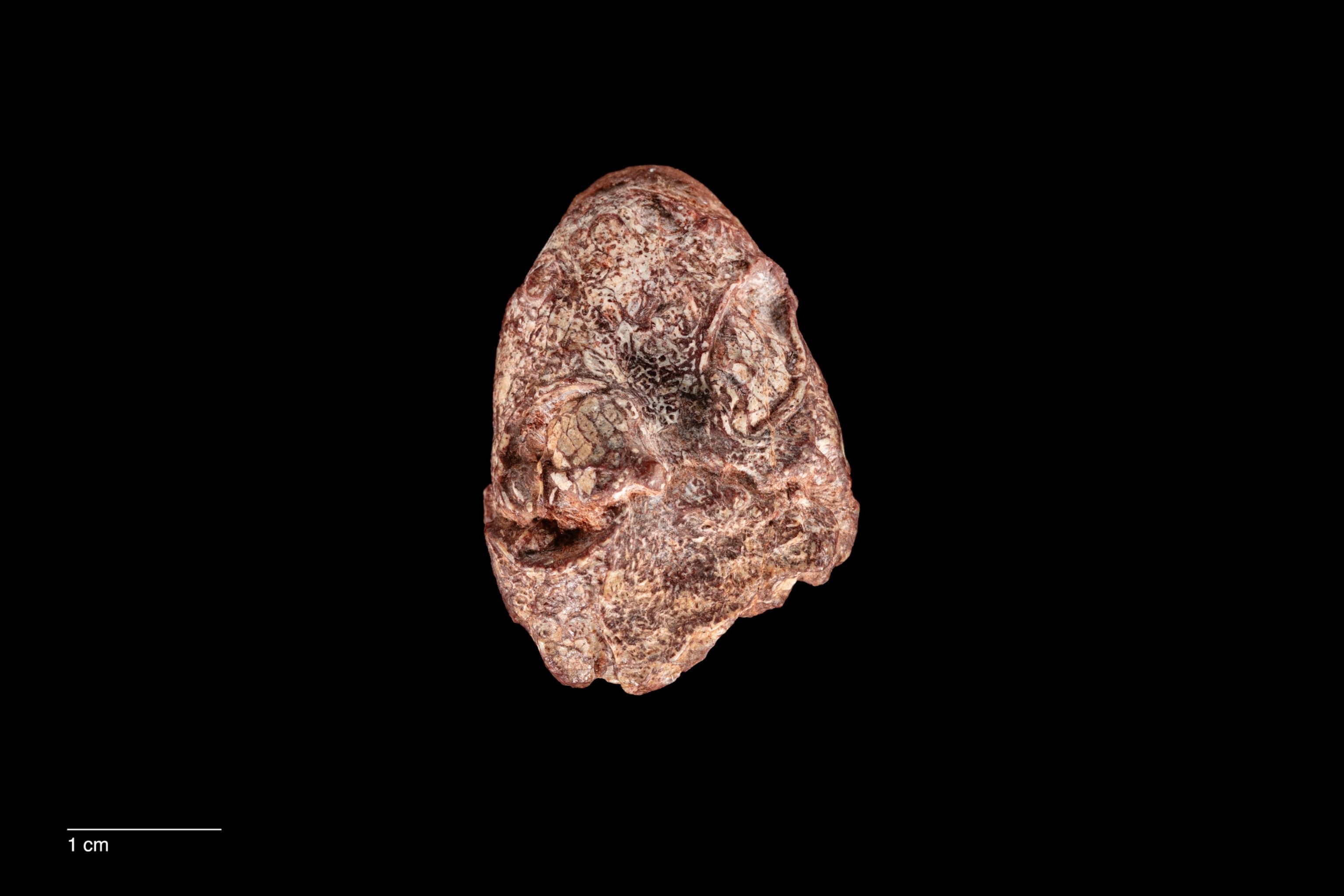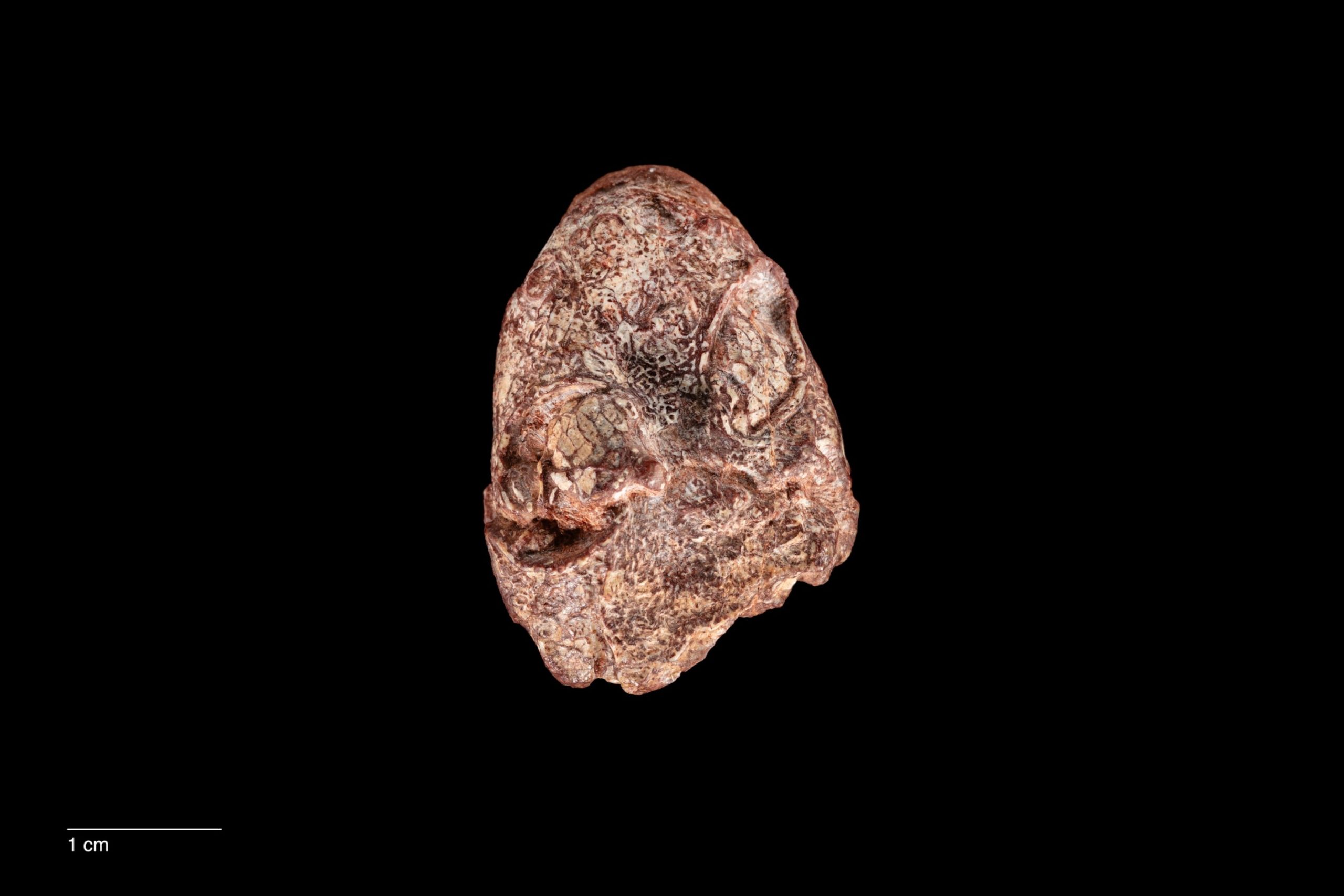Scientists have discovered a new ancient amphibian species that could bridge the gap in understanding how modern-day frogs and salamanders developed.
The fossilized skull of the 270-million-year-old amphibian ancestor was first unearthed in 1984 in a rock formation in Texas. However, it spent decades sitting in a collection at the Smithsonian Institution’s National Museum of Natural History waiting to be studied.
In 2021, a group at the Smithsonian finally began examining the fossil to determine what prehistoric creature the fossil belonged to. The findings were published Thursday in the Zoological Journal of the Linnean Society.
Paleontologists have playfully named the new species Kermitops gratus in honor of the Kermit the Frog, created by Jim Henson.
Calvin So, a doctoral student at the George Washington University and the paper’s lead author, said naming the creature after the beloved character is also an opportunity to get the public excited about the discovery.

Newly discovered proto-amphibian, Kermitops (USNM PAL 407585) from the Department of Paleobiology collections at the Smithsonian Institution National Museum of Natural History. The species is named after Kermit the Frog.
Brittany M. Hance, Smithsonian Institution
“Using the name Kermit has significant implications for how we can bridge the science that is done by paleontologists in museums to the general public,” he said in a release. “Because this animal is a distant relative of today’s amphibians, and Kermit is a modern-day amphibian icon, it was the perfect name for it.”
Researchers said they discovered the fossil was a type of temnospondyl, a primitive amphibian that lived more than 200 million years ago mainly during the the Carboniferous, Permian and Triassic periods.
The one-inch-long fossil has many unique characteristics that scientists realized made it different from previously discovered species. It has large, oval-shaped eye sockets and a skull with a short region behind the eyes but an elongated, curbed snout.
This head shape suggests the animal ate grubs — which are the larval form of certain beetle species — and other small insects, similar to frogs and salamanders.
There are some differences between Kermitops and present-day amphibians. The team discovered the skull has palpebral bones, or eyelid bones. Meanwhile, amphibians have moveable eyelids and have a third eyelid called a nictitating membrane that provides lubrication and protection.
Additionally, researchers found evidence of teeth, though not in the same place as modern-day frogs, most of which have small teeth on the upper jaws and roof of their mouths.
The Smithsonian team said that the history of amphibians and their ancestors documented through fossils is “fragmentary” due to their small and delicate bones, which has made it a challenge to study the evolution to their modern-day counterparts. The discovery of Kermitops, however, could help answer some questions about the evolutionary path.
“Kermitops offers us clues to bridge this huge fossil gap and start to see how frogs and salamanders developed these really specialized traits,” So said.
Frogs are fascinating creatures that have been around for millions of years, evolving and adapting to their environments. Recently, a team of researchers made an exciting discovery in the field of paleontology – the identification of a new 270-million-year-old amphibian species that sheds light on the evolution of frogs.
The newly discovered species, named Triadobatrachus massinoti, was found in Madagascar and is believed to be one of the earliest known ancestors of modern frogs. This ancient amphibian lived during the Triassic period, a time when dinosaurs were just beginning to emerge on Earth.
What makes this discovery so significant is that it provides valuable insights into the evolutionary history of frogs. By studying the anatomy and characteristics of Triadobatrachus massinoti, researchers can better understand how frogs have evolved over millions of years to become the diverse and adaptable creatures we see today.
One of the key features of Triadobatrachus massinoti is its unique combination of traits that set it apart from other amphibians. For example, this ancient species had a long, slender body and well-developed hind limbs, suggesting that it was a proficient jumper. These characteristics are similar to those found in modern frogs, indicating that the ability to jump has been a defining trait of frogs for hundreds of millions of years.
In addition to its physical characteristics, Triadobatrachus massinoti also provides clues about the environment in which it lived. By analyzing the fossilized remains of this ancient amphibian, researchers can infer details about the climate, vegetation, and other aspects of the Triassic period. This information helps paint a more complete picture of the world in which early frogs evolved and thrived.
Overall, the discovery of Triadobatrachus massinoti is a significant milestone in the study of frog evolution. By uncovering new information about this ancient species, researchers are able to piece together the puzzle of how frogs have changed and adapted over millions of years. This knowledge not only enhances our understanding of the natural world but also highlights the importance of preserving and protecting these unique and fascinating creatures for future generations to study and appreciate.



